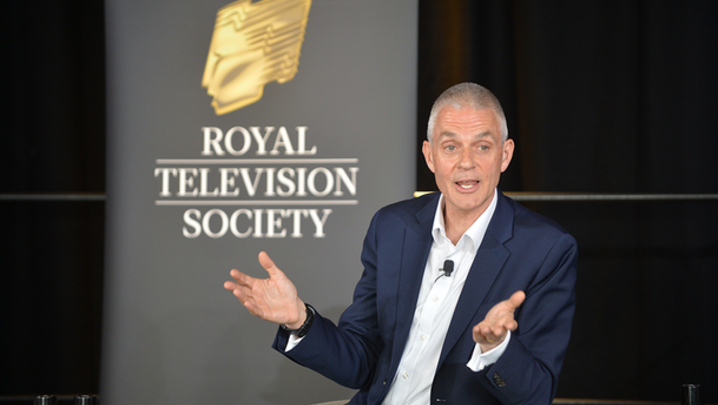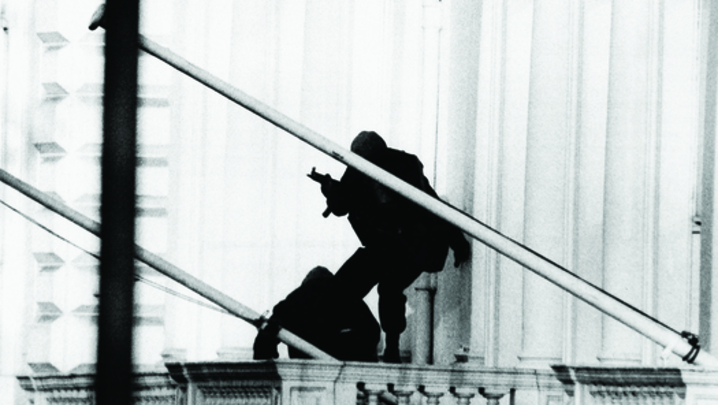Two of the UK’s big six visual effects houses fell with the global giant. So where next for Britain’s VFX sector?
Amid the glitz and glamour of the Oscars, the Visual Effects award is rarely high profile. Not this year. Coming soon after the collapse of Technicolor, which cost thousands of jobs globally, the future of the VFX industry was under scrutiny.
Paul Lambert, VFX supervisor on Dune: Part Two, led the team to collect their reward for a remarkable creative and technical achievement. Slipped into his acceptance speech was a brief credit for one of the VFX collaborators, “the incredible MPC”. The audience understood: it was a heartfelt tribute to one of Technicolor’s British casualties.
What went wrong has been extensively rehearsed and debated: Covid, Hollywood strikes, Brexit, the bursting of the post-Covid bubble – all common to the entire industry. Plus, in the case of Technicolor, an under-bidding strategy to win business.
These were multiple perfect storms, according to Neil Hatton, Chief Executive of the UK Screen Alliance, which represents 190 UK post-production firms, many in visual effects. “2022 was peak year for VFX,” says Hatton. “The streamers were driving for subscriber growth, fuelled through original shows. Then, in 2023, Wall Street said, ‘What really turns us on is a bit of profit’. So they had to throttle back on production.
“Technicolor is a tale of woe, of a corporate culture coming in and taking over creative businesses. People close to the industry knew it was in the last-chance saloon; the only surprise was that it took so long.”
The collapse was a seminal moment for the UK’s Soho-based visual effects industry, says Hatton. Suddenly, two of the country’s “big six” VFX houses, MPC and The Mill – both part of the Technicolor stable – were gone.
VFX is ubiquitous in film and TV, not just in sci-fi and fantasy, though that is where it is most evident. Wicked had more than 2,000 visual effects shots. Warner Bros. responded to anti-CGI sentiment by claiming that Barbie was mainly done with in-camera practical effects... but experts spotted 1,300 VFX shots.
“It doesn’t have to be dragons and mermaids,” says Hatton. “Imagine recreating the frontage of Buckingham Palace. There may be an actual archway done on set, in a back lot, and the rest of the palace will be digitally created and blended into the shot. Most people wouldn’t have any idea.”

Visual effects are present in 80% of productions, says Hatton. Often it is simple “rotoscoping”: drawing round and cutting out an unwanted image, such as a stray cable. And Britain is a world leader in the craft. “In the 90s, visual effects in Britain was a cottage industry,” says Will Cohen, a VFX executive with credits including Doctor Who.
“It was people working in the evening, in downtime, to experiment with compositing and colour technology. All this science, art and tech, trying to find a way to get these things done as part of a digital revolution.
“Then we had a decade of Harry Potter in the UK, and what came out the other side was a centre of excellence to rival the US West Coast.”
Cohen, a former MD of The Mill and ex-CEO of Milk, says that VFX today is especially challenging, partly because it needs so many people. “Labour is the biggest cost to a visual effects house. It’s also difficult to accurately cost a project. So it’s a tough business, even when times are good.”
Despite hitting the headlines after Technicolor’s collapse, visual effects can be a Cinderella industry – doing brilliant, vital work yet often barely noticed. “It’s because we are at the end of the line. We are treated like a service provider,” says Cohen. “It sits in budgets under post-production, which come last in the credits, even though it might involve 500 people who made the show come to life.”
And there’s the rub. In a production timeline, visual effects’ backend position has often seen it lose out in the tax credit stakes. With 80% of production costs eligible, producers have tended to shoot in the UK while doing VFX in countries with better tax benefits.
By the time you read this, that should be changing. After a campaign run by the UK Screen Alliance, the Government is legislating to remove the 80% cap for visual effects so that 100% of VFX costs will be eligible for tax credits.
Will that help? “It has prompted sales enquiries – much more than there were last year,” says Hatton. Once the switch is confirmed, he expects it to convert to tangible bookings worth up to £175m this year. “If we hadn’t got this change, we would be in an awful position because other parts of the world are offering very competitive tax credits.”
How can VFX in the UK reinvent itself post-Technicolor? Joseph Steel, co-founder of Visualskies, which has worked on films including Paddington in Peru and Napoleon, sees answers.
“Historically, visual effects happened after the shoot, with post-production finishing the shots,” says Steel.
“The trend now is towards ‘final pixel’, when the director points the camera at the subject and background, and the visual effects are all done in camera at point of capture. A show like The Mandalorian or House of the Dragon is shot against an LED volume wall – basically a huge high-end TV – behind the actors, with the content on the screen created in advance by 3D artists.”
Steel says this method is good for VFX in the UK because it is harder to shift the work abroad. Now, with a government innovation grant, he is developing an AI evolution of the process, allowing the director and DoP to see the finished shot on their monitors in real time.
AI will also help Steel streamline the process of creating “digital twins” – virtual versions of actors to populate crowd scenes or allow the character to float in space, for example. “We are working with Bournemouth University to do it with 12 cameras, instead of the 120 it takes now.”
Steel’s message, widely shared, is the need for VFX companies to be nimbler, selling their skills and technology wherever there is demand. As well as TV, film and adverts, Visualskies has done surveys for Glastonbury and the Houses of Parliament restoration project. “Being agile in this modern land- scape seems to be the way to go. It’s certainly the future for us.”
“Things are picking up slightly. There are signs of recovery.”
The health of VFX, though, remains inextricably linked to the state of TV and film, and some are seeing encouraging indicators. “In terms of the pro- duction sector, things are picking up slightly. There are signs of shoots of recovery,” says Gill Hind, COO and Director of TV at Enders Analysis.
“But the high-end peak has gone, because the streamers and some big US broadcasters flooded it. It was never sustainable. I think we’ll get back to stuff that’s not as expensive to make.”
That may not be good news for costly VFX, but Hatton remains optimistic. “Yes, we’ll see change, but the big blockbusters are still coming out, like the next Mission Impossible. And the Harry Potter TV series – that’s 10 years of work.
“London is holding its own for a really good reason: we are damned good at it.”







